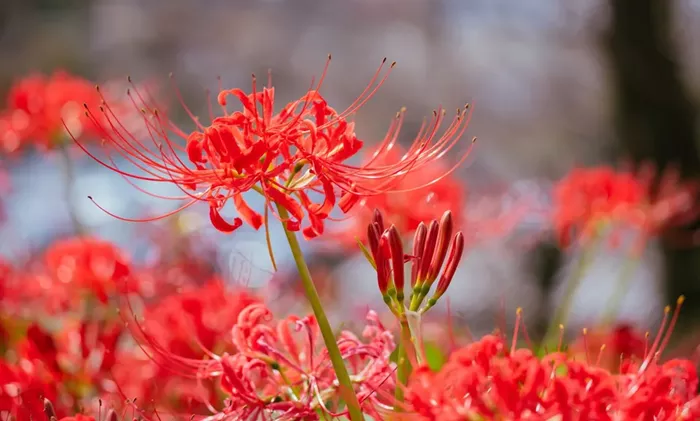As the peak gardening season winds down, it doesn’t mean you have to give up on filling your patio with beautiful blooms. Adding a touch of greenery is an easy and effective way to boost your home’s curb appeal, and it shouldn’t be overlooked.
When it comes to container gardening, there’s still plenty you can do to brighten up your outdoor space. We recently discovered a plant that effortlessly adds visual charm: spider lilies. This striking flower, a member of the Lycoris genus, is sure to captivate your attention, and once you see it, it may be hard to forget. Native to East Asia, spider lilies are surprisingly easy to grow in most regions and thrive particularly well in planters. So, if you’re considering adding some plants to your patio, spider lilies are a great option to consider.
Spider Lilies: The Perfect Container Patio Plants
Gardening expert Lydia Beaumont explains that spider lilies make excellent patio plants for containers due to their compact size and vibrant blooms.
“They require minimal soil, making them easy to care for, even for novice gardeners,” she says. “Plus, growing them in containers allows you to control their environment, ensuring they get the right amount of sunlight and drainage.”
Not every porch features this eye-catching plant, which makes it a unique choice. If you enjoy staying ahead of gardening trends, spider lilies will surely stand out in your patio decor.
Growing Spider Lilies in Containers
When planting spider lilies, it’s important to choose the right setup. Lydia advises using a well-draining pot and planting the bulbs about 2 inches deep in sandy, loamy soil.
“Position them in bright, indirect sunlight, and water moderately during their growth phase,” she suggests. “During dormancy, let the soil dry between waterings.”
As summer approaches, spider lilies enter a dormancy phase, and their foliage may start to die back. This is a natural part of the plant’s life cycle, so don’t be alarmed if your spider lilies look less vibrant during this time.
Different Varieties of Spider Lilies
If you’re looking to diversify the colors in your garden, there are several options beyond the classic red spider lily. Here are a few varieties you can explore:
Yellow Spider Lily (Lycoris Aurea): A sunny yellow option that brings warmth to your patio.
Live Spider Lily (Tropical Plant): For those who prefer not to start from scratch.
Re-Blooming Pink Spider Lily Bulbs: If you want a softer, subtler hue, these pink bulbs can add a cheerful yet understated appeal.
Common Issues and How to Tackle Them
Even the best patio plants can encounter problems if not cared for properly. Lydia offers her expert advice on how to handle common issues with spider lilies.
Pests: Aphids and spider mites are the main pests that affect spider lilies. “I recommend using neem oil to treat the leaves,” Lydia suggests. If you don’t already have neem oil, it’s easy to find sprays specifically designed for plants online.
Fungal Diseases: Overwatering, particularly during dormancy, can lead to fungal diseases. “Make sure your container has good drainage and avoid letting water stand,” Lydia advises. “Always drain any excess water from the tray after watering.”
Bulb Rot: Planting spider lilies in cramped pots can lead to bulb rot. Lydia recommends using a larger pot, at least 12 inches deep and wide, to give the roots enough space. It’s best to plant them in a spacious container from the start to prevent the need for replanting later.
Related topics:
- 7 Plants to Add Bright Colors to Your Fall Garden for a Touch of Autumn Beauty
- Sedum: This Easy-to-Grow Purple and Pink Plant Attracts Pollinators
- Celebrate Fall Again at Bios on the Hill’s Autumn Flower Festival 2024


